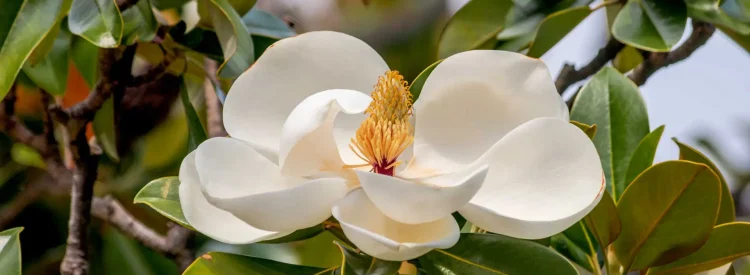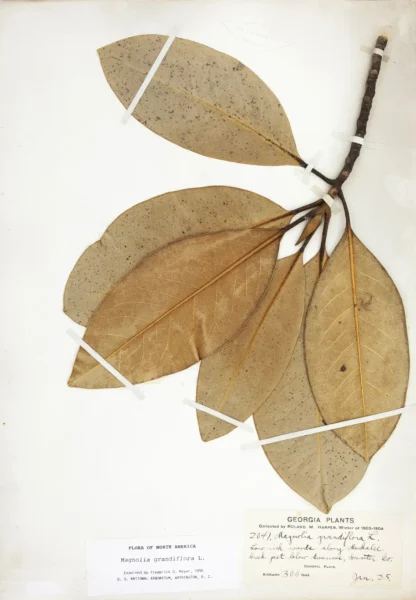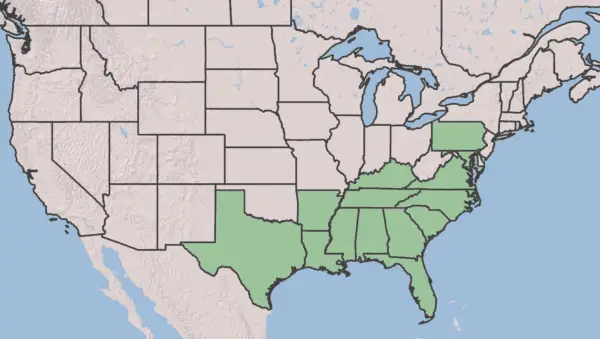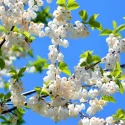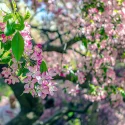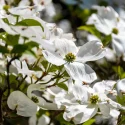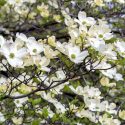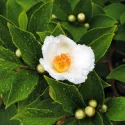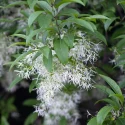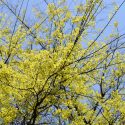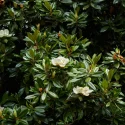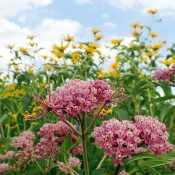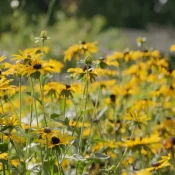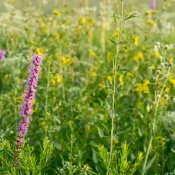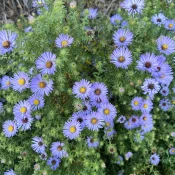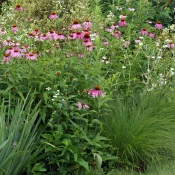When you close your eyes and think of a magnolia tree, you’re probably imagining (and smelling) a Southern Magnolia. These trees have dark green, glossy leaves with a pale green or red underside. In the spring and summer, they cover themselves in scented ivory blooms with yellow centers—the classic flowers associated with a magnolia tree. After the flowers comes a red, cone-shaped fruit. They are evergreen, so they look this good year-round. Southern Magnolias are native from Pennsylvania to Florida, and west to Texas. A showstopper for any yard or park.
Welcome to the world of Southern Magnolias (also known by their Latin name Magnolia grandiflora). This magnificent native tree has been celebrated for centuries for its black-tie elegance and gorgeous-smelling flowers. Southern Magnolias are one of the eight magnolias native to North America. In this article, we will explore how Magnolia grandiflora changes throughout the seasons, share planting tips, and celebrate this incredible native tree.
Let’s start with celebrating what Southern Magnolias deliver.
What are the benefits of planting a Southern Magnolia?
Southern Magnolia is a native tree that has been growing in its home area for thousands of years. Every hurricane, drought, season, or flood they have lived through. If you live within its home region, Southern Magnolia is made to thrive in your yard.
There are so many reasons to plant native plants and trees like Southern Magnolia in our yards and parks:
- Wildlife support. Native trees and plants are the preferred food and homes of pollinators, butterflies, and songbirds.
- Fuss-free, easy gardening. Native trees are made to thrive in their home area’s weather: once they are established, all they need is normal rainfall (compare this to lawns, which may need watering three times a week).
- Multi-generation beauty. Southern Magnolias live around 100 years. Spend a morning or afternoon planting on and watch it return generations of beauty.
New to native?
Before lawns and landscaping, native plants were here. They’ve fed birds, bees, and butterflies for thousands of years—and they’ll do the same in your yard. The best part? They’re easier to grow than you think.
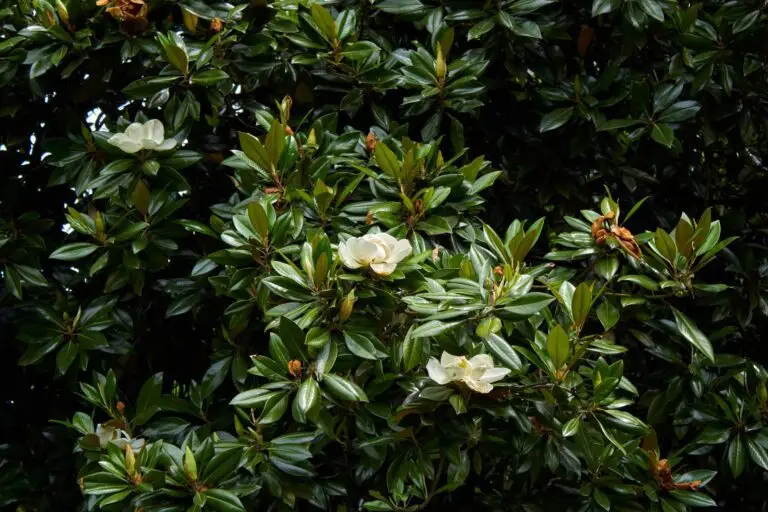
Why is it called a magnolia?
The name ‘magnolia’ comes from the French botanist Pierre Magnol, who was the director of botanical gardens in Montpellier, France in the 1600s.
We’ve discussed in many articles how the names of North American native plants are often named after long-dead European botanists (some of whom never stepped foot on the North American continent.) It’s a bummer to find out that so many of our most beautiful native plants and trees get names from those who admired them from across an ocean.
Southern Magnolias have a few other common names
Southern Magnolias have a few other common names (common names are names that generations before have given plants) including Bull Bay, Large-flowered Magnolia, and Big Laurel. You can start to see the confusion when a single plant has multiple common names. This is why Latin naming was invented: every plant has only one Latin name.
Southern Magnolia’s Latin name is Magnolia Grandiflora. To be sure you’re getting the right plant, look for this Latin name.
Southern Magnolias have been exported since the 1700s
When early European colonists arrived and started exploring North America, they knew they had a stunner when they found Southern Magnolias.
Southern Magnolias were among the first plants to be shipped back to Europe in the 1700s. According to Monticello, “while living in Paris as Minister of France in 1786, Thomas Jefferson requested plants and seeds of the Southern Magnolia or Bull Bay Magnolia be sent to him.”
Today, gigantic, beautiful Southern Magnolias are found in England, Spain, and Italy. All those plants trace their heritage back to North America.
What is the native range of Southern Magnolia?
The native range for Southern Magnolias extends from Pennsylvania down to Florida, and west to Texas. Because of climate change (and thanks to some resilient cultivars), you may now find Southern Magnolias in some Northeast nurseries.
Now that we’ve covered the history and native range, let’s dig into how to plant these stunning native trees.
How to grow Southern Magnolias
Remember—Southern Magnolias have planted themselves with no human intervention for thousands of years. With a few things in mind, planting these trees is a breeze. Here’s what to remember:
Southern Magnolias are big trees
A Southern Magnolia can grow up to 60 to 100 feet tall, with a width of 50 feet. When planting them, ensure they have enough space to grow over decades.
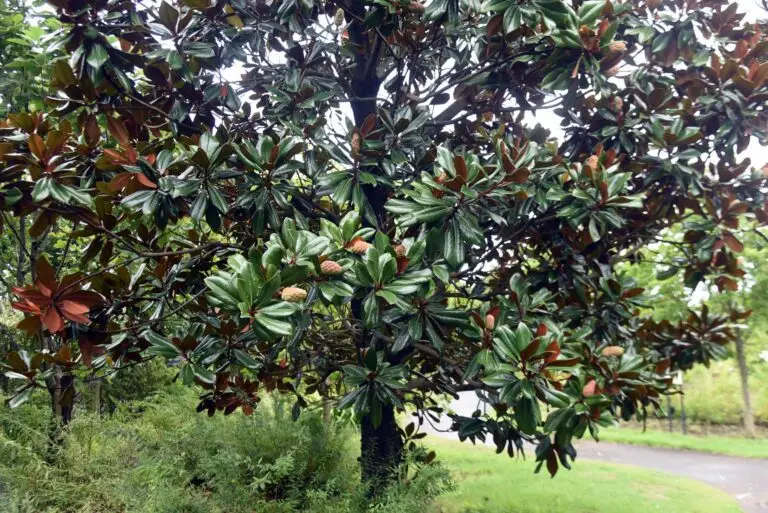
These trees like to be near water
If you have an area that is near water, that is a perfect spot for a Southern Magnolia. In nature, Southern Magnolias are found near waterways like lakes, swamps, and rivers.
If you don’t have a waterway handy, make sure you plant near a place that gets consistent moisture. This could be as simple as paying attention to where the water collects in your yard after a rainstorm.
Southern Magnolias do not like the cold
Southern Magnolias do not like cold, frosty temperatures. On average, Southern Magnolias need to be frost-free for 65% of the days (~240).
Because they need moderate winter temperatures to thrive, planting them in the Northeast can be challenging. However, because of climate change, these trees can now be seen thriving in the Mid-Atlantic states.
What happens when Southern Magnolias go through periods of cold?
Cold snaps happen, even in the warmest Southern climates. Baby seedling Southern Magnolias have the most challenging time recovering from the occasional frost, but an established, large Southern Magnolia can weather occasional cold. When an adult Southern Magnolia experiences a frost, you’ll notice some leaves will have dark splotches or darken (this is them getting freezer burn.) Some leaves will probably fall.
If this happens, don’t worry. In the spring, new leaves will come.
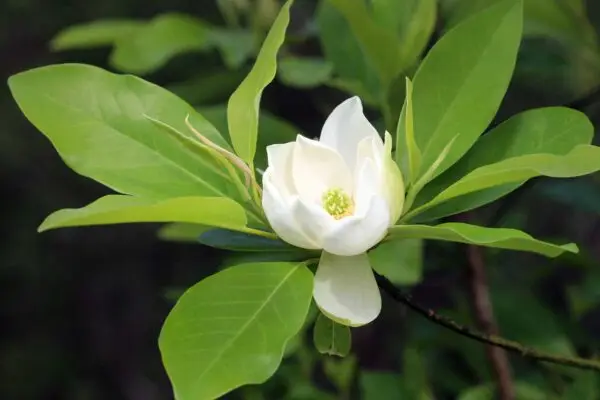
If you’re worried about the cold…
A better magnolia for the Midwest or Northeast is the Sweetbay
If you live in the Northeast or Midwest and want to plant a magnolia, plant a Sweetbay Magnolia, which are native from Massachusetts to Florida, and west to Texas.
A few challenges to mention about Southern Magnolias
One thing to note, as you walk luxuriously around your yard, smelling the glorious Southern Magnolia blossoms: their leaves drop and they can cast deep shade underneath their canopy.
If you plan to have grass up to the tree trunk, it is best to re-evaluate and pivot to planting a shade garden underneath. But honestly, that native shade garden is going to look 30000x better than a lawn. And a native shade garden can handle having dropped leaves turn into soil (as happens in nature), so less work for you!
Southern Magnolia cultivars
The Southern Magnolia has been beloved for hundreds of years, so it’s not surprising that there are 40+ cultivar variations available today. (A cultivar stands for Cultivated Variety or a plant that humans have curated—here’s a quick cultivar overview).
Some Southern Magnolia cultivars have smaller flowers, grow faster or have different colored leaves than their native counterparts. Here are a few you might find at your local nursery:
- Southern Magnolia ‘Bracken’s Brown Beauty’ has (as you can guess) leaves with brown undersides
- Southern Magnolia ‘Edith Bogue’ has been cultivated to have strong branches to withstand occasional snow better
- Southern Magnolia ‘Little Gem’ is a more diminutive version; it grows to 30 feet tall and has smaller flowers
If you’re wondering if it’s better to plant native or cultivars, we have an opinion.
What is a cultivar?
Cultivar is short for CULTIvated VARieties. Cultivars are plants selected for traits like color, size, or disease resistance. Useful and sometimes stunning...but some lose the scent, shape, or timing wildlife depends on. Plant straight species when possible.
That said—planting native cultivars (sometimes called ‘nativars’) is always better than planting non-native plants.
Southern Magnolia landscaping inspo
Want some landscaping inspiration with a Southern Magnolia? You can go all over the world to find it. Here are some Southern Magnolia inspirations from Paris, NYC, and Washington D.C.
What to plant with a Southern Magnolia
There are so many native plants that look incredible alongside Southern Magnolias and can handle some of the shade they bring. Favorites include:
Native shrubs + trees
Native flowers
Looking for some more garden inspiration on what to pair with your Southern Magnolia? Don’t forget to read our Best Native Plants for Southern Gardens guide, Best Native Trees for Front Yards, and our guide for planting a hummingbird garden. Or, if you want to meet other native magnolias, head over to our Beginner’s Guide to Native Magnolias.
Now, you’re ready to bring the beauty of a Southern Magnolia to your yard! Planting this remarkable tree will transform your outdoor space and look amazing year-round for years to come. Don’t worry if you’re new to gardening. Planting trees is easy and returns the effort with shade, privacy, and a welcoming habitat for birds and pollinators. Happy planting!
Sources
- Harris, Marjorie. Botanica North America: The Illustrated Guide to Our Native Plants, Their Botany, History, and the Way They Have Shaped Our World. (2003), 140-141.
- Nelson, Gil. Best Native Plants for Southern Gardens: A Handbook for Gardeners, Homeowners, and Professionals, (2010).
- Sternberg, Gus and Wilson, Jim. Landscaping with Native Trees: The Northeast, Midwest, Midsouth, and Southeast Edition. (1995), 150-151.
- Monticello Shop. “Southern Magnolia (Magnolia Grandiflora),” https://monticelloshop.org/products/southern-magnolia-magnolia-grandiflora.
- The William & Lynda Steere Herbarium, New York Botanic Garden. “Specimen Details – Magnolia grandiflora L.”
- Tu, Mandy. “Ask an Expert: Magnolias.” Hoyt Arboretum, April 17, 2020.
What if your feed was actually good for your mental health?
Give your algorithm a breath of fresh air and follow us.
